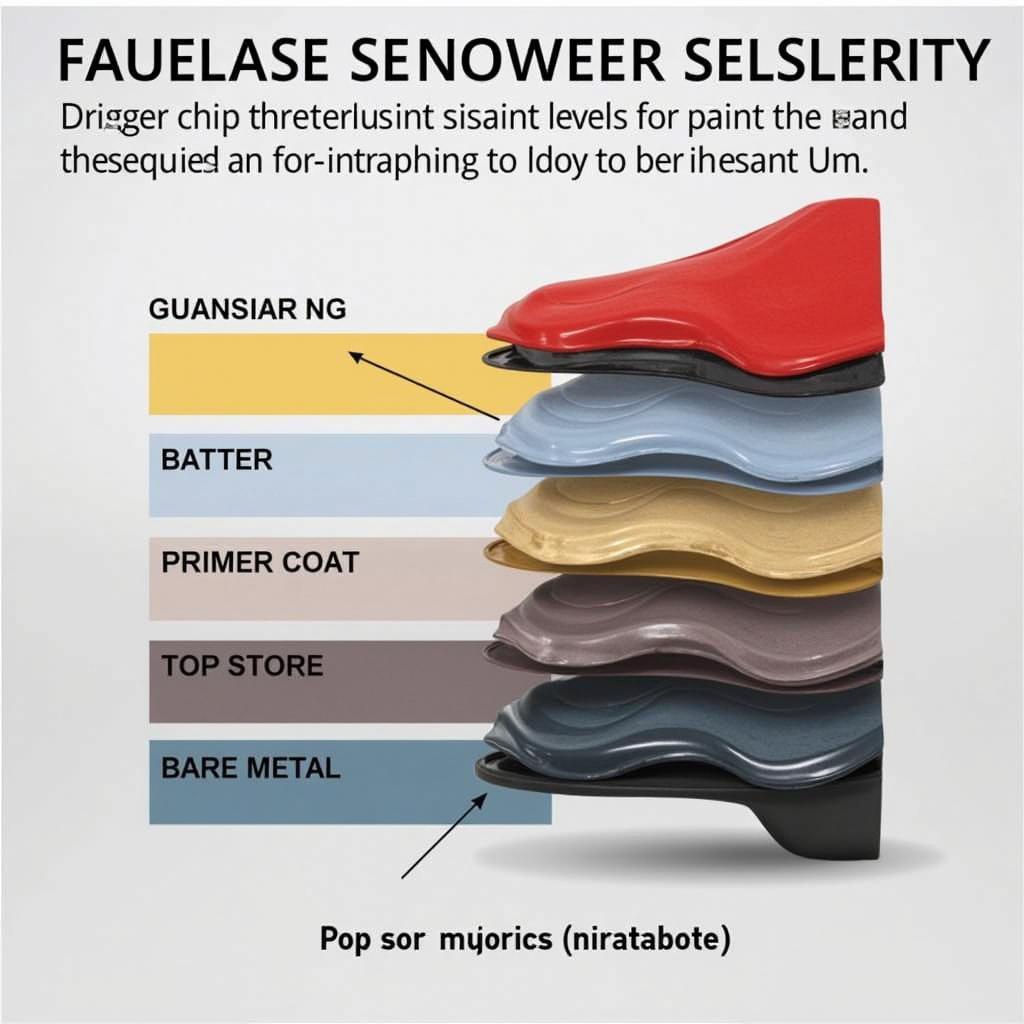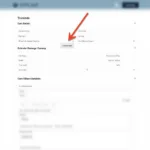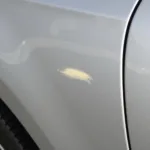Paint chips on your car are an unfortunate reality, whether from rocks, road debris, or even minor parking lot mishaps. Dealing with these blemishes quickly is crucial not only for aesthetics but also to protect your car’s underlying metal from rust and further damage. This comprehensive guide will cover everything you need to know about paint chips car repair, from identifying the damage to choosing the right repair method.
Repairing minor paint chips can often be a DIY project, saving you time and money. For more extensive damage, professional repair might be necessary. Knowing the difference can help you make informed decisions about your car’s repair needs. Learn how to assess the damage and determine the best course of action. repair car paint chips video
Assessing the Damage: How to Identify Paint Chip Severity
Before tackling paint chips car repair, understanding the extent of the damage is crucial. Chips are categorized by depth:
- Clear Coat Chip: Affects only the clear protective layer, appearing as a small, shiny spot.
- Base Coat Chip: Penetrates the colored layer, exposing the primer underneath.
- Primer Coat Chip: Reaches the primer, a gray or white layer beneath the base coat.
- Bare Metal Chip: Exposes the bare metal, making the car susceptible to rust.
Knowing the depth helps you choose the appropriate repair method and materials. If unsure, consulting a professional is always recommended.
DIY Paint Chip Repair: A Step-by-Step Guide
For minor chips, such as those affecting only the clear coat or slightly into the base coat, DIY repair is a viable option. Here’s a simplified guide on how to repair car paint chips:
- Clean the Area: Thoroughly wash and dry the chipped area. Remove any loose paint flakes or debris.
- Sand the Chip (If Necessary): For chips that extend into the base coat, use fine-grit sandpaper (2000-grit) to smooth the edges.
- Apply Touch-Up Paint: Using a fine-tipped brush or touch-up pen, carefully apply the matching paint to the chip. Multiple thin coats are better than one thick coat.
- Level the Paint: If necessary, use a rubbing compound or polishing compound to blend the repair seamlessly.
Remember to repair rock chips car paint quickly to prevent rust and further damage.
When to Call a Professional
While minor paint chips can often be tackled at home, more extensive damage, particularly chips that have reached the bare metal, warrant professional attention. A professional has the expertise and tools to repair large chips, match paint perfectly, and ensure a flawless finish.
“DIY repairs are great for small touch-ups,” says automotive expert, Michael Stevens, “but for larger chips or those involving rust, professional repair is essential for long-term protection.”
Preventing Paint Chips: Protecting Your Car’s Finish
Prevention is always better than cure. Here are some tips to minimize the risk of paint chips:
- Maintain a Safe Following Distance: Avoid tailgating to reduce the risk of rocks and debris hitting your car.
- Wash Your Car Regularly: Regular washing removes contaminants that can etch into the paint.
- Apply a Paint Protection Film (PPF): PPF is a transparent film that protects against rock chips and scratches.
- Wax or Seal Your Car: Waxing or sealing provides an extra layer of protection.
how large of paint chips can you repair on car is a common question and the answer varies depending on the severity and location of the damage. For small chips, DIY solutions are often sufficient. However, for larger or more complex chips, it’s best to seek professional assistance.
Conclusion
Paint chips car repair is essential for maintaining your car’s appearance and preventing further damage. By understanding the different repair options, you can make informed decisions about the best course of action. Whether you opt for a DIY approach or choose a professional service, addressing paint chips promptly is key to preserving your car’s value and protecting it from the elements. how to repair car paint chips is an important skill for every car owner.
FAQ
-
What is the best way to repair small paint chips on a car?
A DIY approach using touch-up paint is often sufficient for small chips. -
How much does it cost to repair paint chips professionally?
The cost varies based on the severity and number of chips. -
Can I prevent paint chips on my car?
Yes, maintaining a safe following distance, regular washing, and applying paint protection film can help minimize the risk. -
What type of paint should I use for touch-up repairs?
Use touch-up paint specifically designed for your car’s make, model, and year. -
How long does it take to repair paint chips?
DIY repairs can take a few hours, while professional repairs might take a day or more. -
Can I repair paint chips that have exposed bare metal?
Yes, but it’s recommended to consult a professional for chips that have reached the bare metal. -
How can I match the touch-up paint to my car’s color?
The paint code for your car can usually be found on a sticker inside the driver’s side doorjamb.
how to repair paint chips on car hood is particularly important due to the hood’s exposure to rocks and other road debris.
“Regularly inspecting your car for paint chips and addressing them quickly can prevent minor blemishes from becoming major problems,” advises automotive specialist, Sarah Miller.
Need help with paint chips car repair? Contact us via WhatsApp: +1(641)206-8880 or email: [email protected]. Our 24/7 customer support team is here to assist you.



